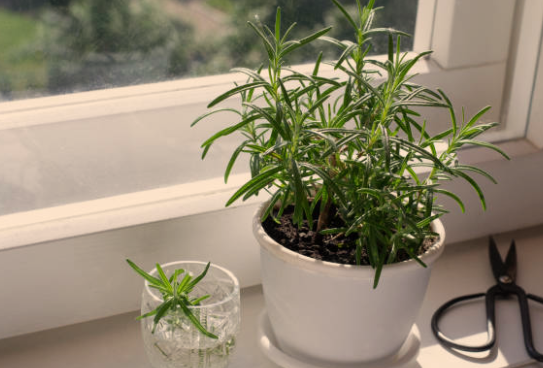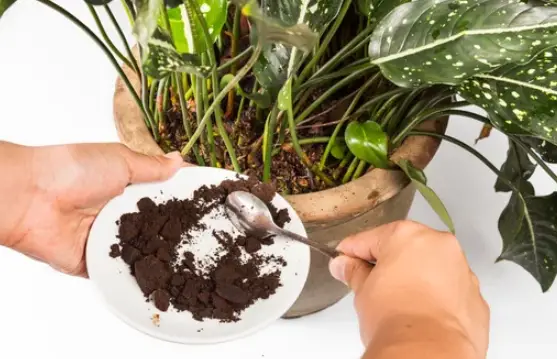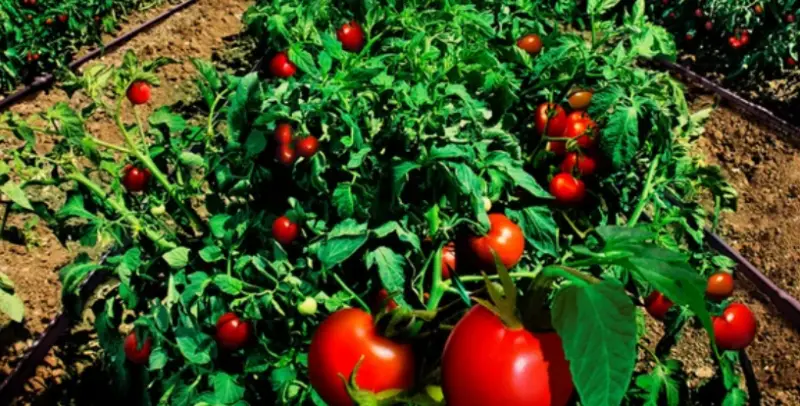
Being able to choose fresh herbs directly from your indoor garden to infuse your home-cooked meals with vibrant, flavorful flavors is immensely fulfilling. Growing an indoor herb garden is not only a simple and fulfilling way to enjoy a year-round supply of fresh herbs at your fingertips, but it is also a cozy and simple way to establish a connection with nature.
Even if you don’t have an outdoor garden or patio space, it’s possible to cultivate a lush indoor herb garden with just a few supplies and the right plant varieties. With some basic care and the proper growing conditions, you can enjoy an endless bounty of fresh rosemary, basil, thyme, mint, and so much more, just steps away from your kitchen.
With this guide on the best herbs to grow indoors, you can prepare to transform your house into an aromatic haven by rolling up your sleeves, grabbing your gardening tools, and getting started.
Top 10 Herbs That Can Grow Indoors
Basil
When it comes to kitchen herbs, fragrant basil is one of the most versatile and beloved varieties to have on hand. This annual herb thrives in warm temperatures and lots of sunlight, making it a natural choice for indoor growing. For best results, plant basil in a pot with nutrient-rich potting mix near a sunny south or west-facing window. Keep the soil moist but not saturated, and harvest the leaves regularly to encourage bushier growth.

There are numerous types of basil to try cultivating, from classic sweet basil to eye-catching purple and lemon varieties. Consider growing a variety pack for an instant window herb garden with a range of flavors.
Mint
Hardy and prolific, mint is one of the easiest and most indestructible herbs for indoor gardens. In fact, you’ll want to take care to plant mint in its own pot to prevent it from taking over any neighboring herbs with its enthusiastic growth habits. Peppermint and spearmint are popular choices, but get creative and grow unique mints like chocolate, apple, or pineapple!

Mint loves lots of bright, direct light but can tolerate lower indoor lighting conditions better than some fussier herbs. Be sure to plant it in a fast-draining potting mix, and water only when the top inch of soil is dry. With occasional pruning and good air circulation, your mint will thrive and reward you with tons of fresh sprigs.
Rosemary
With its distinctive piney aroma and flavor, rosemary brings an herby brightness to all sorts of Mediterranean and Italian dishes. The good news is that it’s also a stellar herb for indoor growing! As a woody perennial, rosemary can grow into a substantial plant if placed in the right conditions. It needs at least six hours of direct sunlight each day and prefers drier soil that’s allowed to dry out somewhat between waterings.

Choose a pot with ample drainage holes and use a well-draining potting mix made for Mediterranean herbs. Avoid overwatering, which can quickly lead to root rot in rosemary. Increase humidity around your plant by misting the leaves occasionally or setting it on a pebble tray. With proper care, your indoor rosemary plant can flourish and even last for several years.
Oregano
Most varieties of flavorful oregano are well-suited for growing indoors in containers, as long as you ensure the right conditions. Native to hot, arid climates, oregano requires lots of direct sunlight, at least six hours per day or supplemental grow lights on a sunny windowsill. Like rosemary, it favors well-draining soil and dislikes having its roots sitting in moisture.

Greek and Italian oregano varieties are fairly compact and make excellent potted indoor herbs. Or try your hand at more unusual oreganos like Syrian or Turkish varieties. Proper air circulation is key to avoiding powdery mildew, as oregano tends to be somewhat susceptible. With these simple needs met, you’ll be trimming plentiful sprigs to flavor pizzas, sauces, and more!
Thyme
With its tiny leaves and woody stems, thyme is a long-lived perennial herb that makes a wonderful indoor companion. Lemon thyme is one of the more fragrant indoor thyme varieties you can grow, with citrusy notes to complement its savory essence. Thyme plants have modest sunlight, water, and space needs that make them very well-suited for containers inside the home.

Place thyme plants in a sunny window and allow the potting mix to dry out moderately between waterings. Be sure to choose pots with good drainage to avoid soggy soil that can lead to root rot. Thyme will thrive when slightly potbound, so there’s no need to transplant to a larger pot each year. Simply refresh the soil annually and enjoy this reliable herb within reach.
Chives
For an endless supply of mild onion flavor, you can’t beat growing chives indoors! These grass-like herbs require minimal fuss but pack a punch of aroma and taste to elevate all kinds of savory dishes. They’ll happily grow in a windowsill pot filled with quality potting mix.

Chives aren’t too demanding when it comes to sunlight exposure, though they’ll produce more slender leaves with at least six hours of direct light. Water chives whenever the potting mix begins to dry out, allowing the soil to drain fully. You can easily grow chives from nursery starters, seed, or by dividing an existing plant. Bonus: the lovely purple flowers are also edible!
Parsley
With its bright, crisp taste and versatility in the kitchen, parsley is a true kitchen garden essential that lends itself well to indoor cultivation. Both curly and flat-leaf parsley make excellent candidates for container growing. While parsley will tolerate full sun, it tends to prefer slightly more shaded conditions indoors and appreciates at least 4-5 hours of sunlight through a window each day.

Parsley also likes to have its soil kept consistently moist but not wet or saturated. A self-watering container is ideal for ensuring this moderate moisture level. To maximize leaf growth for harvesting, fertilize parsley every few weeks with a half-strength liquid fertilizer. You’ll be snipping off stems of fresh parsley for garnishes, salads, and more in no time!
Cilantro
With its distinctive fresh and citrusy notes, cilantro is a beloved herb for both Mexican and Asian cuisines. The catch? Cilantro can be temperamental, with a tendency to bolt and turn bitter in warm indoor conditions. However, it can definitely be grown indoors with some tips and the right techniques.
Cilantro prefers full sun but can manage in bright, indirect light near a window. It loves having its soil kept consistently moist but with excellent drainage. Since cilantro is fast-growing, using a deep pot or self-watering container can help prolong its harvest window before bolting. Start a new pot of cilantro from seed every few weeks for a continuous supply.
Sage
A must-grow for stuffing and seasoning savory dishes, culinary sage is an herb that looks equally attractive as it is tasty. Easy to grow indoors in containers, sage appreciates a sunny spot with at least six hours of direct light. Allow the soil to dry out moderately between waterings, and prune periodically to maintain a compact shape.

While sage plants can grow quite large in outdoor gardens, varieties like golden sage and dwarf sage stay quite petite, ideal for indoor pots. Sage will thrive on somewhat limited root space and minimal fertilizer. Just take care not to allow potting mix to dry out completely. With its fragrant foliage and lovely blooms, sage is ornamental as well as useful!
Lavender
While lavender doesn’t typically make one’s list of cooking herbs, this aromatic plant adds a lovely splash of color and fragrance to any indoor garden. And if grown correctly indoors, you can snip lavender stems for homemade potpourri, sachets, and more! The secret is plenty of direct sunlight, growing in potting mix suited for Mediterranean plants, and ensuring the fastest drainage possible.

Use a cactus or succulent potting mix for best results and replant in fresh soil yearly. Lavender hates wet feet, so make sure containers have ample drainage holes and be sure to allow the soil to dry completely before watering. The trick is simulating lavender’s native hot, sunny, and dry climate as closely as possible inside your home!
Tips for a Thriving Indoor Herb Garden
After seeing all the mouthwatering types of indoor herbs, you are motivated to plant your own, so remember these extra suggestions for a successful indoor herb garden.
Light: Most herbs require at least 6 hours of direct sunlight each day, near a bright window facing south or west. If you lack ample natural light, supplement with a quality LED grow light or sunny bulbs. The more light, the better your herbs will grow!
Air Circulation: Indoor herbs need good air circulation not only to strengthen stems but to prevent issues like powdery mildew







